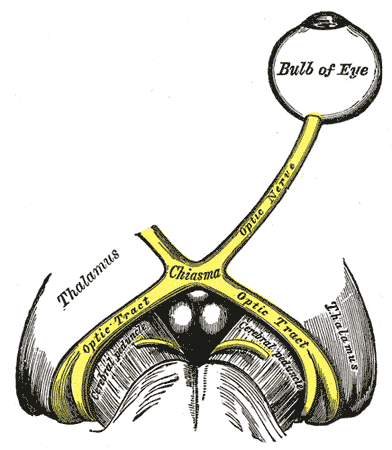Surfing the Circadian Waves
Episode #7 of the course Sleep hacks: Using science to improve your sleep by John Robin
Welcome to Day 7 and our seventh sleep hack!
I hope you’re using the three touchstone habits to cultivate the relaxation response. Now that we can start building more relaxation-orientation in our daily living, we can explore the science behind further barriers to getting that amazing eight- to nine-hour, REM-recharging sleep that will make your mind laser-sharp while keeping you feeling great the whole way.
Let’s start with when to sleep, because there’s interesting science here that will give us yet another hack to revolutionize our pillow-time practice.
Sleep Optimal Zones
There is another small structure similar in size to the orexin-producing neurons. It’s called the suprachiasmatic nucleus and it only contains about 20,000 neurons.
It is located in the part of the brain called the thalamus, right at the base of the skull. Put your tongue on the roof of your mouth, as far back as it can go, and imagine a line continuing straight from the tip of your tongue into the middle of your head. That’s about where the suprachiasmatic nucleus is located.
You can appreciate it more in this diagram:

In the middle, you can see two grape-like balls and part of a third above them, under the part labeled, “chiasma.” The half-covered ball is the suprachiasmatic nucleus.
Its 20,000 neurons are somewhat of a master system of neurons, which is why for today’s hack, we’re going to be paying attention to what they do.
The suprachiasmatic nucleus regulates the brain based on cycles of the sun. It regulates:
• when we are most alert (about 10 a.m.)
• when we are most coordinated (about 2:30 p.m.)
• when our blood pressure and body temperature are highest (about 5 p.m.)
And of course, it regulates when we sleep deepest (about 2 a.m.). It also regulates many other rhythms related to sleep:
• when melatonin secretion starts (about 9:30 p.m.)
• when melatonin secretion stops (about 7:30 a.m.)
(Melatonin is a hormone produced by another brain structure, the pineal gland, and makes us sleepy. It’s also found in turkey meat.)
If you want to think of what the suprachiasmatic nucleus is doing, imagine your circadian rhythms as waves on a shore. When should you fall asleep? Think like a surfer: When is the best wave going to come?
The above times are based on common findings, but among the science is one critical fact: Not everyone has identical biorhythms. Also, as the suprachiasmatic nucleus bases its signals on cycles of the sun, these will, therefore, change with the seasons, as well as the influence of artificial light.
Your goal is to pay attention to your body, knowing the general trends of the suprachiasmatic nucleus.
The absolute best time to fall asleep is when melatonin is being secreted in your body. That’s about 9:30 p.m., or when sunlight is dimming (provided you also have your lights out). The best time to be out of bed is before your melatonin stops, about 7:30 a.m. (or when sunlight is coming back).
But that’s idealism, and unfortunately, many of us can’t do that. Instead, you can hack the process by understanding how to ride the waves of the suprachiasmatic nucleus.
If you can’t get to sleep when the first wave comes, don’t waste your time in bed tossing and turning because you missed the first wave. Stay up until the next wave comes, usually about 1 to 2 a.m. In staying up past the first wave, your body releases neurochemicals to stimulate you. They tend to wear off after a few hours. If you wait until they subside, you’ll fall asleep quickly, as about 2 a.m. is when our suprachiasmatic nucleus tells us to sleep the deepest.
Experiment with this: Over several nights, document the last time you find yourself looking at your clock. If it’s consistently about 1:30, then that’s when the next wave (for your body) is. Now, make that your bedtime by planning to have your no-tech wind-down at 12:30.
I go to bed at 2:30 a.m. every night. I wake up about 11:20 a.m. I get almost mostly 90% sleep efficiency out of this, the best quality sleep I have ever had.
In order to do this, I had to change my lifestyle around, including establishing my own work schedule. I had to quit jobs and say no to numerous commitments to achieve this, but we’ll talk more about that in our closing hacks.
Whatever you do, be consistent. Inconsistency in bedtimes will throw your suprachiasmatic nucleus out of whack. Studies have shown that inconsistent sleep patterns, as found in those who do rotating shift work, can lead to a higher incidence of cancer and heart disease.
Putting this all together leads us to another question, which will be for tomorrow’s hack: How do you instill a sleep-first orientation that even rises above life commitments?
Recommended book
Lights Out: Sleep, Sugar, and Survival by T.S. Wiley and Bent Formby, PhD
Share with friends

